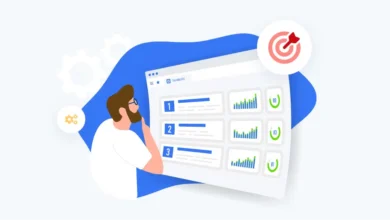
In today’s globalized marketplace, the ability to communicate effectively in different languages is not just an asset – it’s often a necessity for businesses looking to expand their reach. This extended reach can mean connecting with new audiences, tapping into diverse markets, and creating a level of cultural engagement that’s difficult to achieve with a monolingual strategy.
Why Translation Matters
The barrier-breaking nature of translation can open up new horizons for your business. Here’s how it can be a game-changer for your communication strategies, market expansion, and cultural alignment.
Improved Communication
Clear and concise communication is at the heart of every successful business. The removal of language barriers can vastly improve customer service, allowing for seamless transactions and building stronger, more loyal client relationships.
Market Expansion
The world is full of untapped potential, and language is often the invisible wall standing between your business and a new market. By translating your website, marketing materials, and product information, you can extend your business’s presence to regions that may have previously seemed out of reach. Whether it’s Spanish, Mandarin, Arabic, or any other language, reaching out in your client’s native tongue is a sign of respect and can greatly increase the chances of a connection being made.
Cultural Sensitivity
Every culture has its nuances and subtleties, and respecting these differences is crucial to successful global business. Translation goes beyond mere word conversion; it includes an understanding and sensitivity to cultural context.
Translation Tools and Technologies
In the digital age, there’s a plethora of tools and technologies at our disposal to streamline the translation process. Here are some key platforms and techniques that are shaping the way businesses handle multilingual content.

AI Translation
Artificial Intelligence (AI) has revolutionized the translation landscape with its ability to process and translate massive volumes of text with considerable speed. From free tools like Google Translate to more advanced AI-driven platforms, businesses can now translate texts fast, albeit with some loss in nuance compared to human translation. AI translation is particularly useful for quickly making content accessible in multiple languages, but it should be complemented with human review for critical or nuanced content where accuracy is paramount.
Localization Platforms
Translation is just one part of the localization process, which involves adapting content not just linguistically, but also culturally and contextually to suit the target audience. Localization platforms are comprehensive tools that manage the entire lifecycle of translated content, from file management to in-context review and website content publishing.
Effective Translation Strategies
A haphazard approach to translation can lead to miscommunication and misinterpretation of your brand. To ensure your content is translated effectively, consider implementing these proven strategies.
Quality Control
Implement strict quality control measures to maintain the accuracy and consistency of your translated content. This includes using a skilled team of professional translators or meticulously reviewing content produced by AI. Quality control also involves managing glossaries and translation memories to ensure terms are translated uniformly across all your content.
SEO Optimization
If your business has an online presence, SEO (search engine optimization) is critical for visibility. When translating your website and online content, it’s imperative to consider SEO in multiple languages. Additionally, local link building and adapting content to regional search engine preferences can give your translated content a competitive edge.
Multilingual Content Marketing
Content is king, even in the multilingual kingdom. Your multilingual content strategy should align with your overall brand message and marketing objectives but also be adapted to the linguistic and cultural nuances of each target market. This may include adapting humor, tone, and even the layout of your content to suit local preferences.
Case Studies
Nothing demonstrates the power of translation more effectively than real-world success stories. Here are case studies of businesses that have thrived by effectively leveraging translation.
Global E-commerce Success
A small e-commerce site specializing in unique fashion accessories saw remarkable growth after translating their website and product descriptions into Spanish, Mandarin, and French. By doing so, they made their products accessible to millions of new potential customers, resulting in a 200% increase in sales in just one year.
Cross-Border Social Media Campaigns
An entrepreneur running a social media campaign for a tech product discovered the impact of translation when they localized their ads and messages for different markets.

Conclusion
The integration of effective translation into your business strategy can lead to profound transformations. By establishing clear communication, tapping into new markets, and demonstrating cultural sensitivity, your brand can achieve global relevance and resonance.



